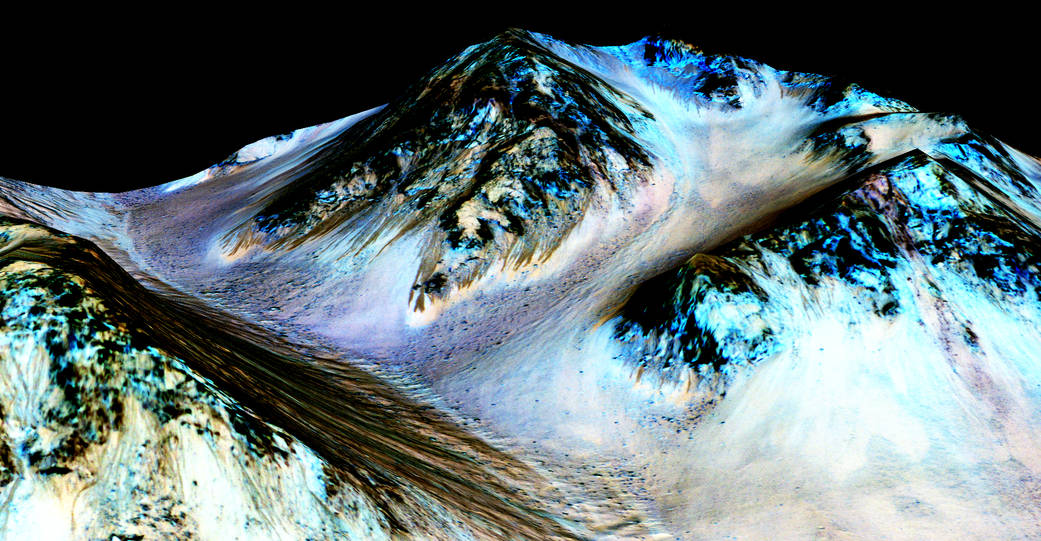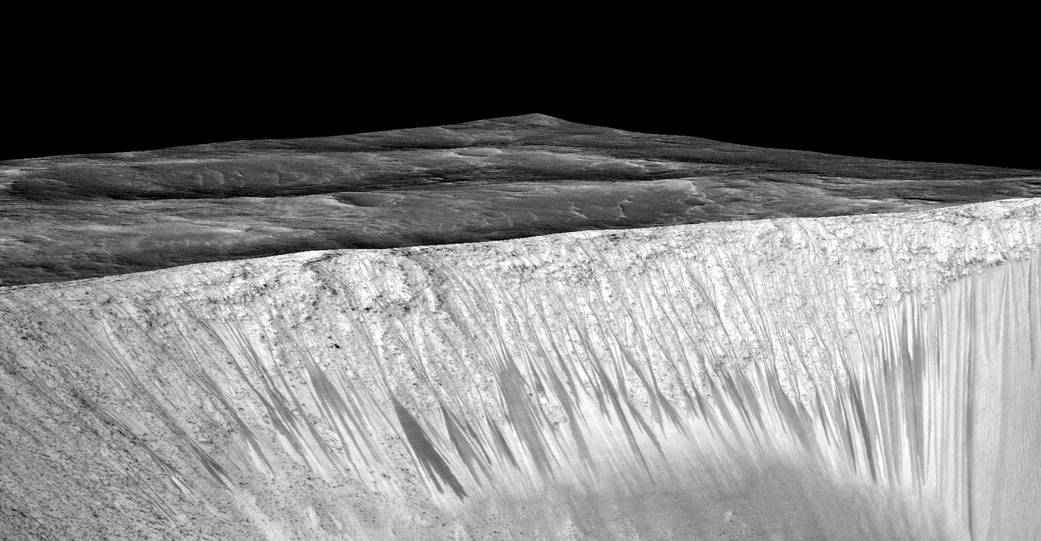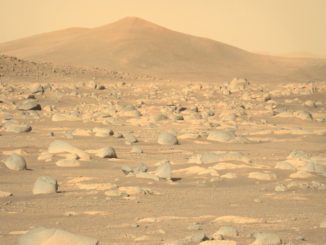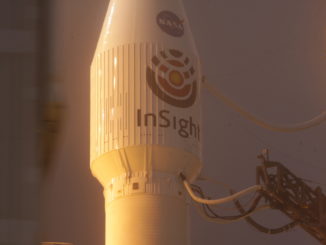STORY WRITTEN FOR CBS NEWS & USED WITH PERMISSION

Researchers using data from a NASA satellite orbiting Mars said Monday they have found clear evidence of intermittent flows of salty water on the red planet, the first “unambiguous” signs of liquid water on the frigid world and a possible indicator of microbe-friendly environments below the surface.
“Mars is not the dry, arid planet we thought of in the past,” Jim Green, NASA’s director of planetary science, told reporters. “Under certain circumstances, liquid water has been found on Mars.”
The apparent flows were first noticed in 2010 by Lujendra Ojha, then an undergraduate at the University of Arizona, studying photographs taken by the Mars Reconnaissance Orbiter. Dark streaks were apparent in the sun-facing walls of steep craters near the equator during the warmer summer months.
The streaks appeared to brighten and darken over the martian year, fading away during the winter and showing back up in warmer weather when the temperature climbed back above minus 10 degrees Fahrenheit. Multiple sites later were identified, in craters, cliff faces and mountainsides.
Scientists came up with a variety of explanations for the branching channel-like streaks, arguing they could have been caused by some sort of surface phenomenon involving water, dust slides or other non-liquid phenomena. The water hypothesis appeared to be a stretch given the low pressure of the martian atmosphere and constant, below-freezing temperatures.
But spectroscopic data from the Mars Reconnaissance Orbiter has revealed telltale signatures of hydrated salts, known as perchlorates, around numerous streaks known as “recurring slope lineae,” or RSLs.
The hydrated minerals are consistent with magnesium perchlorate, magnesium chlorate and sodium perchlorate. Found on Earth in desert environments, perchlorates have been shown in the laboratory to keep liquids from freezing at temperatures as low as minus 94 degrees Fahrenheit.
On Mars, the hydrated salts “would lower the freezing point of a liquid brine, just as salt on roads here on Earth causes ice and snow to melt more rapidly,” NASA said in a statement.

Researchers said a sub-surface flow of briny water could allow enough liquid to “wick” its way to the surface to explain the recurring slope lineae. Another mechanism could be the absorption of water vapor from the thin martian atmosphere by the perchlorates, which then would dissolve away leaving a water solution behind.
“Regardless, the presence of hydrated salts in these flows means that these features are formed contemporary with liquid water,” said Ojha, now studying for his doctorate at the Georgia Institute of Technology and lead author of a paper published Monday by Nature Geoscience.
How much water? Alfred McEwen, the principal investigator for the High Resolution Imaging Science Experiment — HiRISE — aboard the Mars Reconnaissance Orbiter, said calculations based on the observed streaks indicate the global presence of more than 25 million gallons of liquid water.
That “sounds like a lot if it’s all in one place, but that’s dispersed over very wide areas,” he said. “So what we’re dealing with is thin layers of wet soil, not standing water.”
Data from a variety of spacecraft have shown that Mars once hosted a warmer, wetter environment with a thicker atmosphere, flowing rivers and large bodies of water on the surface.
While Mars was once habitable for life as it’s known on Earth — water, organic compounds and energy from sunlight were present — it’s not clear how long those conditions persisted or whether life ever had a chance to evolve. Mars today appears to be a cold, desert world.
But the discovery that liquid water still flows on the red planet, even intermittently, bolsters the odds that microbial life of some sort could, in theory, still exist on Mars.
“Water is an essential ingredient for life,” said Mary Beth Wilhelm, a researcher at NASA’s Ames Research Center and the Georgia Institute of Technology. “Our results may point to more habitable conditions on the near surface of Mars than previously thought.”
But she added that it’s far from clear whether Earth-like microbes could exist in the martian environment.
“To assess habitablity, we would first need to determine how cold and how concentrated the brine is,” she said.
But senior NASA managers were less circumspect.
“Everywhere we go where there’s liquid water, whether its deep in the Earth or in the arid regins, we find life,” Green said. “We haven’t been able to answer the question ‘does life exist beyond Earth?’ But following the water is a critical element of that. We now have great opportunities to be in the right locations on Mars to thoroughly investigate that.”
McEwen said the discovery only strengthened his view that the probability of life on Mars is high.
“There’s certainly water somewhere in the crust of Mars, and Mars has received meteorites from Earth, it’s been contaminated by Earth,” he said. “We know that microbes can survive that trip. So it’s very likely, I think, there is life somewhere in the crust of Mars, microbes. But where is it? How accessible is it? Now, maybe, there’s something we can find close to the surface. That’s what’s exciting.”



